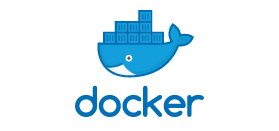The “bad file descriptor” error in Docker happens when a system or app tries to use an invalid or closed file descriptor. At Bobcares, with our Docker Hosting Support Service, we can handle your issues.
Overview
- Fixing “bad file descriptor” error in Docker
- What Causes the “Bad File Descriptor” Error?
- How to Troubleshoot and Fix the Error?
- Conclusion
Fixing “bad file descriptor” error in Docker
The “bad file descriptor” error in Docker is a common issue that occurs when an operation is attempted on an invalid or closed file descriptor (FD). File descriptors are references to open files or sockets, and problems arise when they are closed, invalid, or not accessible for the intended operation. This article explores the common causes of this error and practical steps to troubleshoot and resolve it.

What Causes the “Bad File Descriptor” Error?
1. Incorrectly mounted files or directories can cause access issues. A container may lack the required permissions to access a mounted file or directory. For example, mounting a directory as read-only and attempting a write operation triggers this error.
2. Resource exhaustion, such as running out of available file descriptors, can lead to this error. Problems with resource management in the Docker daemon or kernel may also cause FD handling issues.
3. If a process tries to access a file or socket that has already been closed, the system throws a “bad file descriptor” error. For instance, one process may close a file while another still attempts to access it.
4. Systems with a low file descriptor limit (ulimit) can run into this error when containers exceed the allowed number of open FDs. The current limit can be checked using:
ulimit -n
5. A damaged file system, either on the host or inside the container, can disrupt file operations and cause this error.
6. Mismatched versions of Docker, the host kernel, or drivers can lead to FD-related problems. Keeping both Docker and system software up-to-date helps avoid these issues.
How to Troubleshoot and Fix the Error?
1. Check Permissions
Ensure proper permissions for the files or directories being accessed:
On the host:
ls -l
Inside the container:
docker exec ls -l
2. Validate Volumes
Verify that the host paths being mounted are correct and accessible.
Check the mount options (e.g., read-only or read-write) to ensure they match the container’s requirements.
3. Monitor System Resources
Use tools like lsof to monitor open file descriptors:
lsof
Increase the file descriptor limit if necessary:
ulimit -n
4. Examine Logs
Inspect container logs for specific error messages:
docker logs
Review Docker daemon logs for additional insights:
sudo journalctl -u docker
5. Update Docker and System Software
Ensure Docker and the host system are running the latest stable versions to avoid known bugs or compatibility issues.
6. Restart Docker Daemon
Restarting the Docker daemon can resolve transient issues:
sudo systemctl restart docker
7. Reboot the Host
If all else fails, reboot the system to address any lingering kernel or driver issues.
[Want to learn more? Click here to reach us.]
Conclusion
The “bad file descriptor” error in Docker, though frustrating, is often tied to straightforward causes like misconfigurations, resource limits, or outdated software. By systematically checking permissions, monitoring resources, and ensuring compatibility, we can resolve this error and maintain smooth container operations.







0 Comments